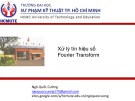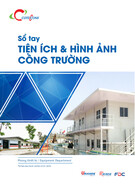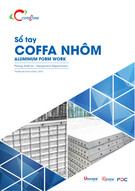
Tuyển tập Hội nghị Khoa học thường niên năm 2015. ISBN: 978-604-82-1710-5
xxvii
CLIMATE CHANGE AND DESIGN CRITERIA
OF STRUCTURAL MEASURES FOR NATURAL DISASTERS
Hung Soo KIM
Vice President, Korean Water Resources Association
Professor, Dept of Civil Eng, Inha Univ., Korea. Email: sookim@inha.ac.kr
ABSTRACT
The natural disasters such as flood
s
and droughts have been severely occurred in Korea. So,
this study tried to suggest the procedure for frequency analysis of the future rainfall, snowfall
depth, and wind speed. The design criteria were estimated based on the frequency analysis for
each hazard under the climate change. We compared the current design value and the future
value then investigated the design criteria of structural measures for the future. Based on the
climate change analysis, we have shown that the future rainfall and wind speed will be increasing
but the snowfall depth will be decreasing.
INTRODUCTION
In recent decade, the natural disasters
such as flood and drought have been
severely occurred in Korea and this may be
due to the climate change by global
warming. So, Korean government tried to
develop new design criteria for structural
measures considering climate change effect
that will both reduce and prevent the
impacts of natural disasters for public
security. The objective of this study is to
suggest the design criteria of structural
measures based on the frequency analysis
for rainfall, snowfall, and wind speed under
the climate change.
METHODOLOGY
To quantify the impact of climate change
on rainfall and snowfall, we use a GCM
model of CNCM3 developed by Centre
National de Recherches Meteorologiques,
France and A1B, A2, B1 climate scenarios
for the simulation of each meteorological
data are used. The reason that CNCM3 GCM
model is used here is based on the work of
Kyoung (2010) who tested 24 GCM models
provided by IPCC AR4 for the selection of a
proper model which can be used in the
Korean peninsula. However, the different
models are used for the estimation of wind
speed. This work uses the spatial and
temporal downscaling techniques for
obtaining the needed data for the frequency
analysis in the study area. Point and regional
frequency analysis are conducted for rainfall
and snowfall. Overall diagram for the
methodology is shown in the Figure 1.








































